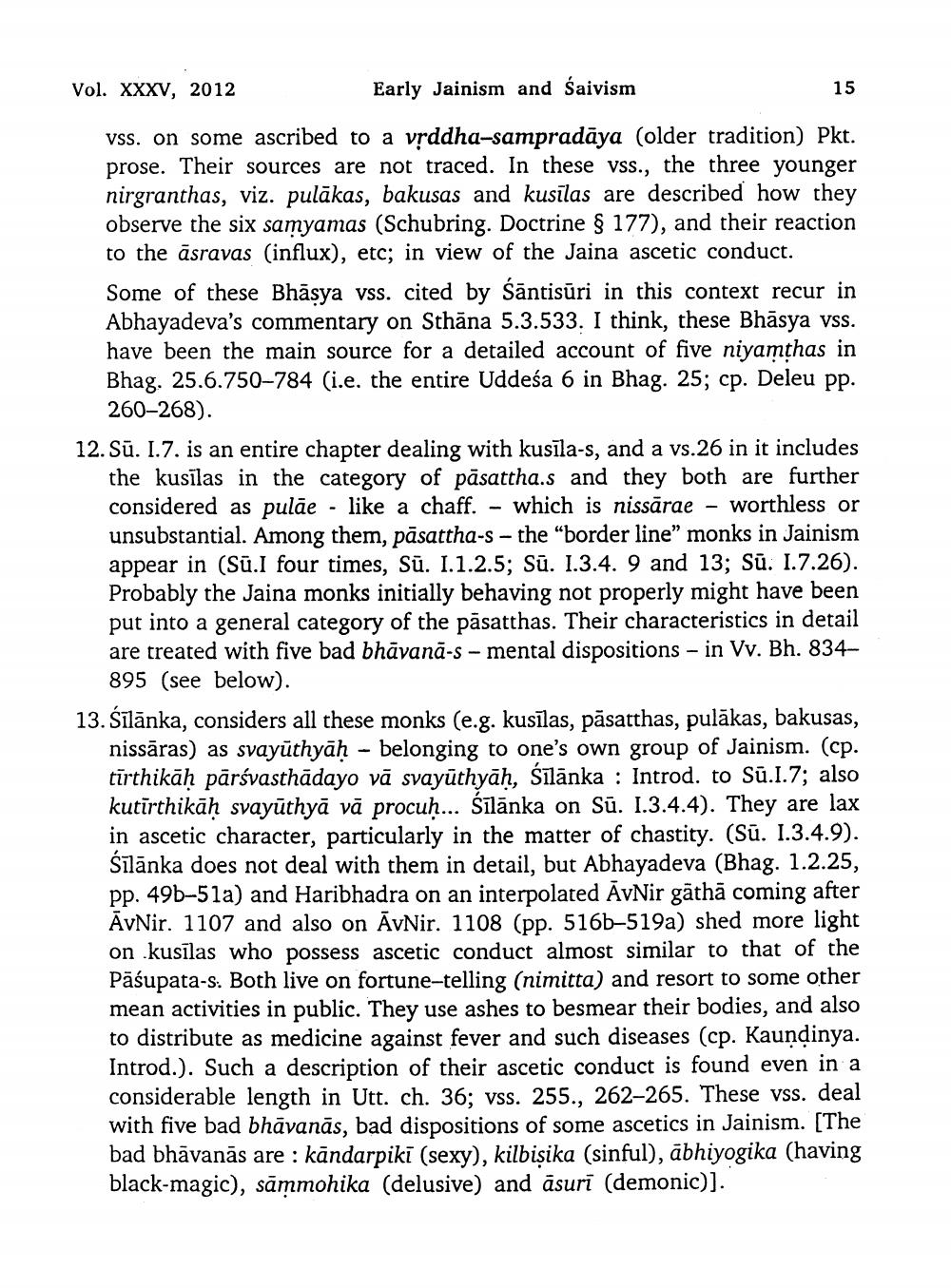________________
Vol. XXXV, 2012
Early Jainism and saivism
15
vss. on some ascribed to a vrddha-sampradāya (older tradition) Pkt. prose. Their sources are not traced. In these vss., the three younger nirgranthas, viz. pulākas, bakusas and kusīlas are described how they observe the six samyamas (Schubring. Doctrine § 177), and their reaction to the asravas (influx), etc; in view of the Jaina ascetic conduct. Some of these Bhāsya vss. cited by śāntisūri in this context recur in Abhayadeva's commentary on Sthāna 5.3.533. I think, these Bhāsya vss. have been the main source for a detailed account of five niyamthas in Bhag. 25.6.750-784 (i.e. the entire Uddesa 6 in Bhag. 25; cp. Deleu pp.
260-268). 12. Sū. 1.7. is an entire chapter dealing with kusīla-s, and a vs.26 in it includes
the kusīlas in the category of pāsattha.s and they both are further considered as pulāe - like a chaff. - which is nissārae - worthless or unsubstantial. Among them, pāsattha-s - the "border line" monks in Jainism appear in (Sū.I four times, Sū. 1.1.2.5; Sū. 1.3.4. 9 and 13; Sū. 1.7.26). Probably the Jaina monks initially behaving not properly might have been put into a general category of the păsatthas. Their characteristics in detail are treated with five bad bhāvanā-s - mental dispositions - in Vv. Bh. 834
895 (see below). 13. Śīlānka, considers all these monks (e.g. kusīlas, păsatthas, pulākas, bakusas,
nissāras) as svayūthyāh - belonging to one's own group of Jainism. (cp. tīrthikāḥ pārsvasthādayo vā svayūthyāḥ, śīlānka : Introd. to Sū.I.7; also kutīrthikāḥ svayūthyā vā procuḥ... Śīlānka on Sū. I.3.4.4). They are lax in ascetic character, particularly in the matter of chastity. (Sū. I.3.4.9). śīlānka does not deal with them in detail, but Abhayadeva (Bhag. 1.2.25, pp. 495-51a) and Haribhadra on an interpolated ĀvNir gāthā coming after ĀvNir. 1107 and also on ĀvNir. 1108 (pp. 516b-519a) shed more light on kusīlas who possess ascetic conduct almost similar to that of the Pāśupata-s. Both live on fortune-telling (nimitta) and resort to some other mean activities in public. They use ashes to besmear their bodies, and also to distribute as medicine against fever and such diseases (cp. Kaundinya. Introd.). Such a description of their ascetic conduct is found even in a considerable length in Utt. ch. 36; vss. 255., 262-265. These vss. deal with five bad bhāvanās, bad dispositions of some ascetics in Jainism. (The bad bhāvanās are : kāndarpiki (sexy), kilbisika (sinful), ābhiyogika (having black-magic), sammohika (delusive) and asuri (demonic)].




